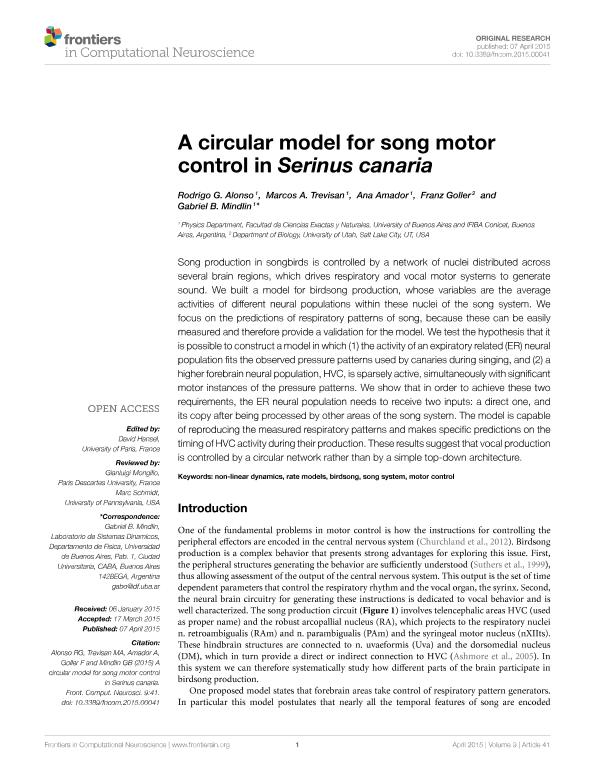Artículo
A circular model for song motor control in Serinus canaria
Fecha de publicación:
03/2015
Editorial:
Frontiers Research Foundation
Revista:
Frontiers in Computational Neuroscience
ISSN:
1662-5188
Idioma:
Inglés
Tipo de recurso:
Artículo publicado
Clasificación temática:
Resumen
Song production in songbirds is controlled by a network of nuclei distributed across several brain regions, which drives respiratory and vocal motor systems to generate sound. We built a model for birdsong production, whose variables are the average activities of different neural populations within these nuclei of the song system. We focus on the predictions of respiratory patterns of song, because these can be easily measured and therefore provide a validation for the model. We test the hypothesis that it is possible to construct a model in which (1) the activity of an expiratory related (ER) neural population fits the observed pressure patterns used by canaries during singing, and (2) a higher forebrain neural population, HVC, is sparsely active, simultaneously with significant motor instances of the pressure patterns. We show that in order to achieve these two requirements, the ER neural population needs to receive two inputs: a direct one, and its copy after being processed by other areas of the song system. The model is capable of reproducing the measured respiratory patterns and makes specific predictions on the timing of HVC activity during their production. These results suggest that vocal production is controlled by a circular network rather than by a simple top-down architecture.
Palabras clave:
Nonlinear Dynamics
,
Rate Models
,
Birdsong
,
Song System
,
Motor Control
Archivos asociados
Licencia
Identificadores
Colecciones
Articulos(IFIBA)
Articulos de INST.DE FISICA DE BUENOS AIRES
Articulos de INST.DE FISICA DE BUENOS AIRES
Citación
Alonso, Rodrigo; Trevisan, Marcos Alberto; Amador, Ana; Goller, Franz; Mindlin, Bernardo Gabriel; A circular model for song motor control in Serinus canaria; Frontiers Research Foundation; Frontiers in Computational Neuroscience; 9; 3-2015; 1-9
Compartir
Altmétricas




